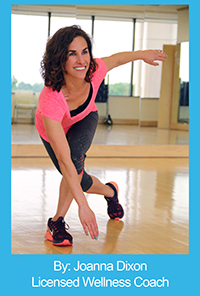Favorite Exercises of Fitness Experts!

You want to begin a workout. Great! The question now is what exercises do you do? The possibilities are endless when it comes to exercise selection.
Think about exercise in terms of traveling. There may be a thousand different routes you can take to get to your destination. All will get you there, but some will get you there more efficiently. That’s how exercise is. There are many different exercises that will get you results, but some are simply better than others.
Here is a list of exercises that I believe will get you those results that you are looking for in less time.
Burpees
Oh burpees! If you’ve ever experienced this dreaded exercise, the name alone might conjure up powerful memories of burning muscles, profuse sweating and gasping for breath. So why do them you ask? The answer is very simple… THEY WORK!! You’d be hard pressed to find an exercise with more functionality. It’s somewhat like the Swiss army knife of the fitness world. Also, it can be done just about anywhere. With each one, you will engage your legs, core, chest and arms, as well as getting that all important heart muscle pumping!
How to do a burpee:
- Begin in standing upright position
- Lower to squat position placing hands on floor
- Hop legs straight out so you’re in a push-up plank position
- Hop legs back in to squat position with hands still on floor
- Stand or jump up reaching hands toward ceiling
Special recommendations
Burpees are one of the highest intensity exercises that you can perform, which makes it ideal for weight loss. I recommend doing an interval-style workout with burpees. Given its high intensity nature it may be difficult to perform burpees for too long without fatiguing to failure, especially for a beginner. Start with 20 seconds of work and 20 seconds of rest (1 to 1 work to rest ratio). As you progress, you can manipulate the work to rest ratio by extending the work period and decreasing the rest period.
Squats
The squat has been around forever. It’s like that outfit you have in your closet that never goes out of style. Squats engage every muscle in the lower body, as well as the core and lower back muscles. Any time multiple large muscle groups are worked at once, it creates a great environment for muscle strength and growth. But why put such a common exercise on this list? Two words… Adaptability and Variation.
Squats can be tailored to almost any level of fitness or mobility. There are an unlimited number of variations that can be performed with a squat (back squat, front squat, box squat, etc…). If the squat isn’t already a part of your normal workout routine, get it in there!
How to do a squat:
- Stand with feet slightly wider than shoulder width apart and parallel to each other
- Rest hands behind head or criss-cross over chest
- Lower to a seated position reaching hips back as if reaching for a chair behind you
- Keep weight on heels at all times (you should be able to wiggle your toes when in squat position)
- Push through heels to return to standing position without locking knee joints
Special recommendations
If your goal is muscle growth, my recommendation is to use moderate weight with a moderate rep range (8-12). This will create an ideal environment for muscle growth. When working toward muscle growth, you need sufficient rest in order to allow the muscles to repair. Make sure to rest at least 48 hours in between performing squats. For weight loss, high repetitions of body weight squats are a good option. Jump squats can greatly increase the intensity and caloric expenditure.
Kettlebell Swings
The kettlebell swing may be a little less familiar than other exercises, but it has grown in popularity over recent years. It is a total body exercise centered on an explosive hip hinge movement. Also, it will considerably raise your heart rate, which improves cardiovascular endurance.
How to do a Kettlebell Swing:
- Stand with feet slightly wider than shoulder width apart and parallel to each other while holding a kettlebell with both hands by the handle
- Lower to a squat position with kettlebell between legs (remember to keep weight in heels at all times)
- Push through heels and swing the kettlebell overhead while returning to a standing position
- Using core stability and shoulder strength, stop the kettlebell swing as soon as it is directly above your head (Do not let your shoulders hyperextend allowing the kettlebell to go behind your body)
- Immediately let the kettlebell swing back in front and between your legs while lowering back to the squat position
- Keep in mind to maintain a firm grip on the kettlebell at all times and perform controlled, fluid motions with this exercise
Special recommendations
It is very important not use too much weight or perform too many repetitions. That’s because when fatigue sets in, your form may suffer and can lead to injuries. I recommend using light to moderate weight and performing about 8-12 repetitions.
So, there you have it! Some of the best workouts to help you get the results you want! If these are not already part of your normal workout routine, consider adding them!




 Women's Health
Women's Health Eat Healthy
Eat Healthy Exercise
Exercise Health & Wellness Articles
Health & Wellness Articles